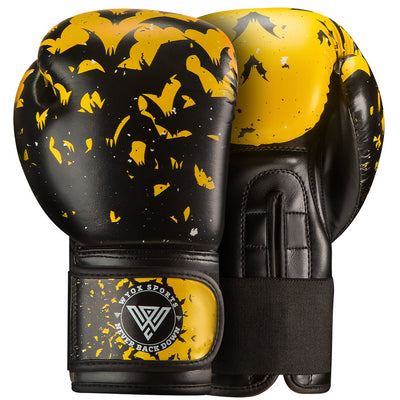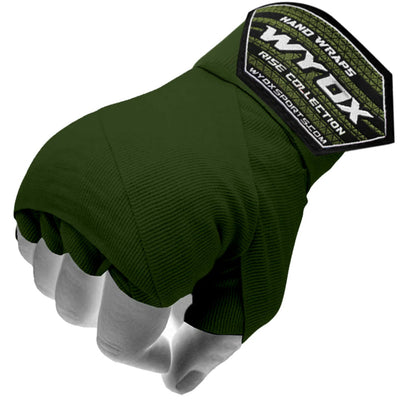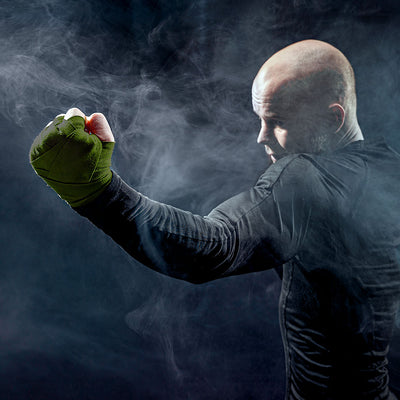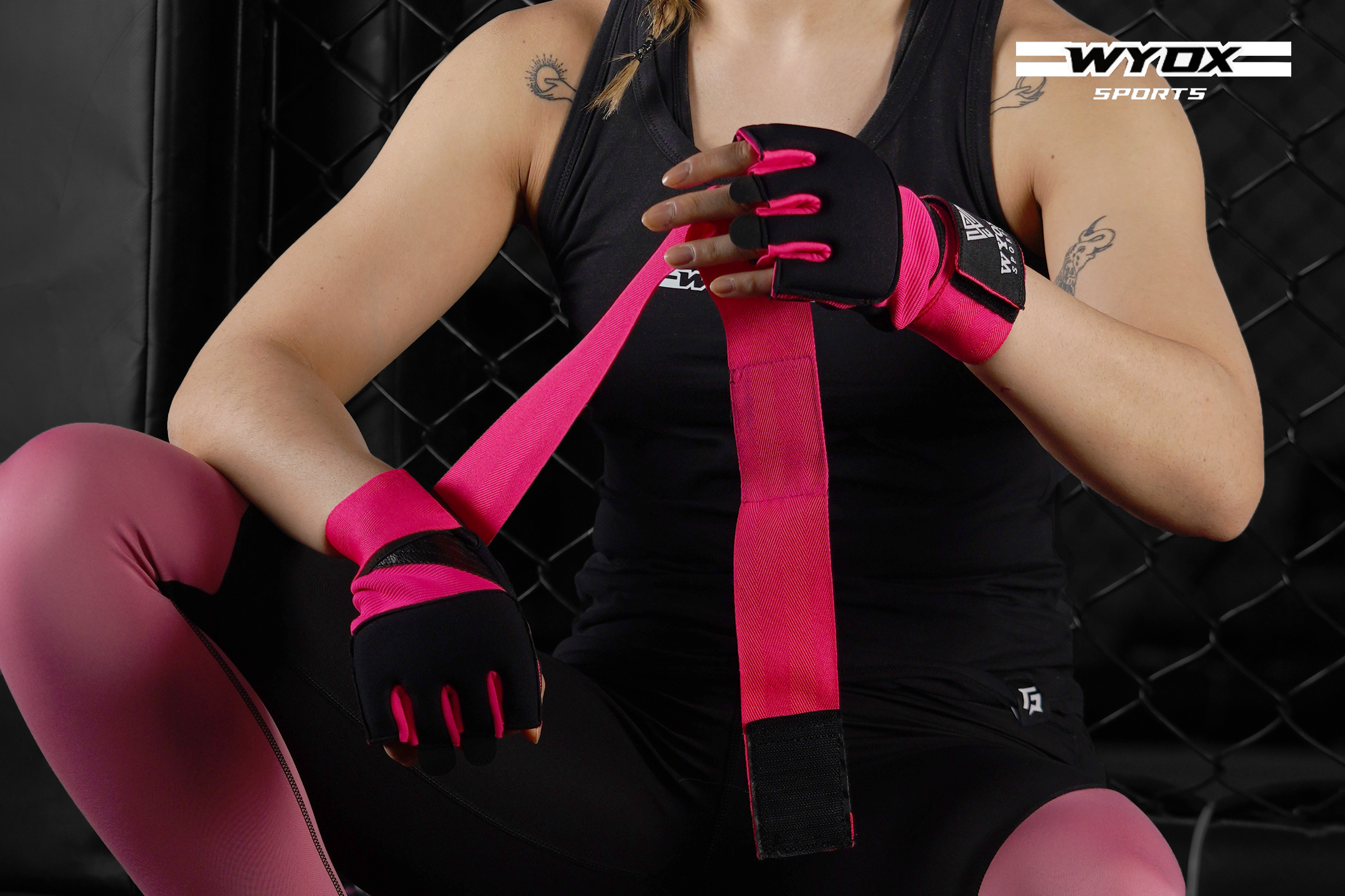Overview of Wrapping Hands for Boxing
Hand Wraps are also an essential part of boxing, providing necessary protection and reinforcement to a boxer’s hands. Wrapping for Boxing reduces the risks of injury, supports the wrists and knuckles, and increases the efficiency of workouts. In this guide, you will discover what wrapping hands for boxing is, what you need, and a directory that teaches how to do it correctly. Whether you are starting as a boxer or are an expert boxer, you need to comprehend how to bandage hands for boxing before you continue.
Why do Boxers Wrap their Hands?
1. Injury Prevention
A Shield Against Impact! Boxing Wrapping is a very intensive physical activity through which the punches are delivered and received with considerable strength. Wrapping for boxing serves as a protective barrier, shielding boxers from potential harm:- Wrist Support: It fastens the wrist, particularly the direction of force during punches, and stops excessive opening of the wrist joint.
- Knuckle Cushioning: Cloth or gel wraps the fists, and the layers of cloth cushion the next to minimize bruising and fractures.
- Thumb Protection: Including the thumb in the wrap is helpful, as this area is well covered to prevent the child from slipping off.

2. Preserving Structural Integrity
Complex Anatomy of the Hand! Our hands are impressive works of complex bone, tendon, and ligament structures. Boxers subject them to intense stress, making proper wrapping essential:- Metacarpals: They make up the skeletons of joints, also known as the knuckles, and are five in number. They spread pressure, applying protection against metacarpal fracture.
- Tendons and Ligaments: Such soft tissues get beaten up by repetitive punches. Wrapping maintains their integrity.
- Long-Term Health: Thus, wraps assist in the hand’s architecture so that boxers get training with little or no impact on the hand's health.
Material Required for Boxing Wrapping
Now that you understand why boxers wrap their hands, learning how to wrap your hands is only relevant. You should collect all the necessary boxing equipment before preparing your hands for boxing. Here’s what you’ll need:- Hand Wraps: Boxing wraps shield knuckles, wrists, and hands during training or competition. You can choose a regular or rapid cloth wrap, typically 180 inches long.
- Gauze and Tape (Optional): While hand wraps provide primary support, some boxers prefer additional padding and stability. If you want extra protection, consider using gauze and tape. Wrap the gauze around your knuckles and then secure it with tape.
- Scissors: Keep a pair of scissors handy for cutting tape and gauze to the desired length.

How to Select the Appropriate Hand Wraps
This article was devoted to the lesson of how to bandage hands for boxing when the wrapping technique is already precise; therefore, it is time to choose the hand wrap. The selection of a hand wrap greatly determines boxing wrapping drills. Here are some factors to consider:- Length: Gloves range from 8oz to 12oz, but there is usually a standard, the 180-inch band, in which the hands of the boxers are well-contained. There are also shorter types of wraps 120 inches long; however, the possibility is low that they would protect as much as a longer one.
- Material: When choosing a wrap, you should ensure that it is of a light material such as cotton or cotton blended with elastic. Elastic wraps, or Mexican-style wraps, are less body-hugging and more flexible.
- Brand: Select WyoxSports; we are the brand people trust for quality and comfortable sports clothing. Thus, reading reviews and relying on the suggestions of trainers or other boxers is an excellent way to make the right choice.
Step-by-Step Guide on How to Wrap Hands for Boxing
After learning why do boxers wrap their hands, it's time to discover the wrapping techniques. Wrapping hands for boxing, especially when one is starting, can be a daunting task. In case you do not know the procedure, follow these steps to ensure your hands are wrapped adequately for boxing:Step 1: Preparing the Wraps
Thorough preparation of the wraps lasts for a limited time; you must pay attention to it. Unwind the hand wraps, revealing the thumb area with a loop. Bring the loop around the back of the hand and then over the palm to place it around your thumb to secure the wrap.Step 2: Wrapping the Wrist
Indeed, wrapping the wrist is one of the methods typically used in handling injuries. Take the bandage and put it around your wrist, about three to four turns for extra support. Make sure the wrap is somewhat tight, but not too tight so that it affects blood circulation in the affected part.Step 3: Wrapping the Thumb
The procedure of wrapping the thumb Wall, which Chan described as the ‘Ways of the Fist,’ is undoubtedly profound. Wind the bandage around the base of your thumb to tie it. In performing the stroke, the thumb has to be in a vulnerable position, thus making it essential to avoid thumb injuries.Step 4: Wrapping the Knuckles
Your knuckles need special protection when you're a boxer. Take the bandage and wind it around the knuckles of your fingers about 3- 4 times. Boxing offers absorption and spares your knuckles from the force or blow of punches.Step 5: Wrapping Between the Fingers
Wrap between each finger, beginning with the tiniest pinky and proceeding to the largest, the index. It aids in confinement and retaining position during training sessions or fights.Step 6: Securing the Wrap
Keep wrapping it around the wrist and the area between the knuckles, following a uniform pattern. Complete the process by Fastening the wrap with the Velcro closure or tape before wearing it. The wrap should fit enough to give that support but not too tight to compress the body.
Common Mistakes to Avoid While Wrapping for Boxing
Below are some mistakes one should avoid when wrapping up a boxer.- Too Tight: Tight wrapping is dangerous because it applies pressure and interferes with average blood vessel circulation, causing pain. Ensure the wrap is fit enough to hold the tube in place but not too tight to constrict the flow of the two fluids.
- Inconsistent Tension: Thus, avoid a situation where some parts of the fabric are loose or covered tightly.
- Ignoring the Thumb: If you forget to wrap your thumb correctly, there is a high chance of injury to the thumb part. Some animals, therefore, always maintain an adequately tied knot on the thumb.
- Skipping the Fingers: Not wrapping between the fingers can cause the wraps to be displaced, thus diminishing efficiency.
Additional Tips for Effective Boxing Wrapping
Other tips that can be taken into consideration as one wraps for boxing include
- Practice Makes Perfect: Take extra minutes to wrap the items appropriately to ensure maximum support during transportation.
- Consult Professionals: As for the second problem, one should consult with trainers or experienced boxers and enhance the skill of wrapping.
- Take Care of Your Wraps: After each use, wipe off your hand wraps and inspect them for any indications of wear and tear. Change them periodically to ensure they provide enough security for your possessions.
- Add Extra Protection with Athletic Tape: Applying athletic tape over your hand wraps, particularly around the wrist and knuckles, is helpful.
Also Read: How To Wrap Hands For Boxing
Take Away
Thus, Wrapping Hands for Boxing is an important technique that each athlete should implement. Correct hand wrapping will help avoid an injury and improve performance, which is vital for training and actual fights. In the above step-by-step guide, you discover why do boxers wrap their hands and how to bandage hands for boxing. Furthermore, it is also important not to make mistakes so that your hands are ready for action and protected. Remember that practice makes perfect, and one needs to be consistent to sharpen the boxing wrapping process.
Frequently Asked Questions (FAQs)
Q: How frequently should I change my hand wraps?
A: Hand wraps should be replaced when worn or torn at the seams or when they lose elasticity. However, good washing and handling may make them last longer.
Q: Can I use quicker wraps instead of the regular wraps for the product?
A: Quick wraps are portable and offer reasonably satisfactory support. Still, traditional wraps allow for much more personalization and frequently provide more protection.
Q: Should hand wraps fit tightly on my hands?
A: They should be tight but not too tight—like a second skin to the boxer. It should be loose so one can fold his hand into a fist without feeling the cloth compressing the hand.
Q: Are there any specific boxing wrapping techniques?
A: Yeah, some boxers use different boxing wrapping styles when sparring, hitting a heavy bag, or fighting. Consult with your trainer on which of the two would be most appropriate for you.















